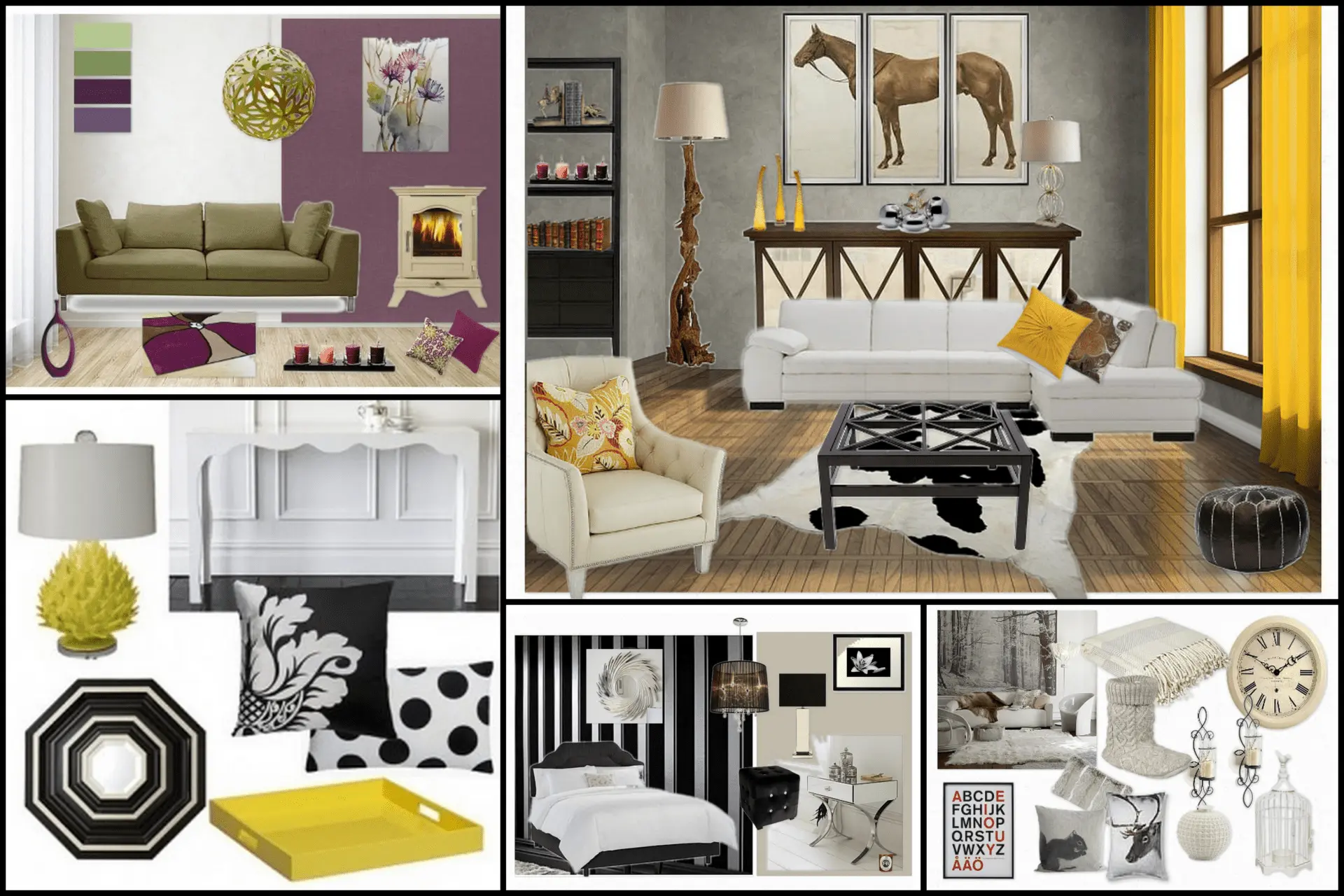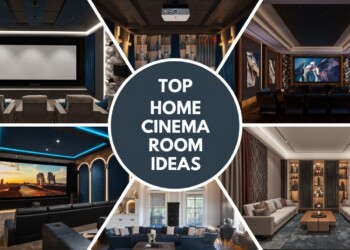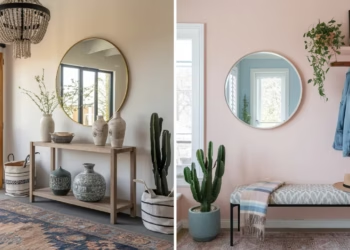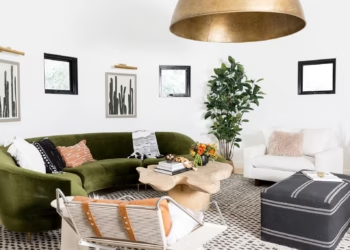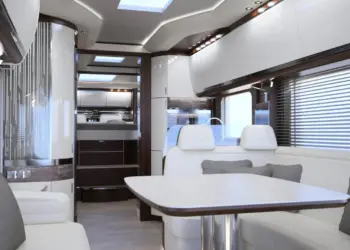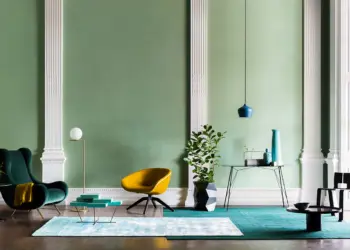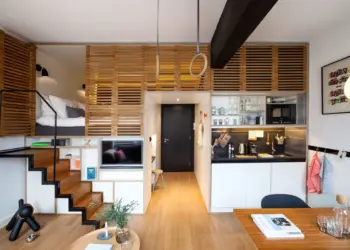Moodboards are powerful tools for interior design. They help people visualize their dream spaces by combining design elements, colors, textures, and furnishings on one platform. Creating an impressive moodboard requires creativity, attention to detail, and an eye for aesthetic harmony. Whether you’re renovating your home or redesigning a room, a well-executed moodboard can guide you towards your ideal living space.
Table of Contents
1. Introduction A The World Of Designing a Moodboard
Creating a moodboard for your ideal interior unleashes creativity, allowing you to express your unique style. Whether you’re drawn to modern minimalism, vintage charm, or eclectic vibrancy; a moodboard serves as a visual manifesto that encapsulates your design preferences and aspirations, providing you with a tangible blueprint for your ideal living space.
2. Understanding the Concept of a Moodboard
A moodboard portrays a design concept or theme using curated images, textures, colors, and materials. A visual collage helps articulate design vision, showing how elements interact in a specific space. By incorporating diverse visuals and textures, a moodboard allows you to experiment with different combinations and arrangements, enabling you to refine your design choices and create a cohesive and harmonious interior aesthetic.
2.1 Key Elements of a Moodboard
Understanding the key elements that constitute a moodboard is essential for creating a well-balanced and visually appealing composition. Incorporating images, fabric swatches, paint samples, and material textures; helps you establish a comprehensive visual narrative that reflects your design preferences and aspirations. By strategically integrating key elements; you can create a moodboard that effectively communicates your design vision and fosters a deep understanding of your aesthetic goals and inspirations.
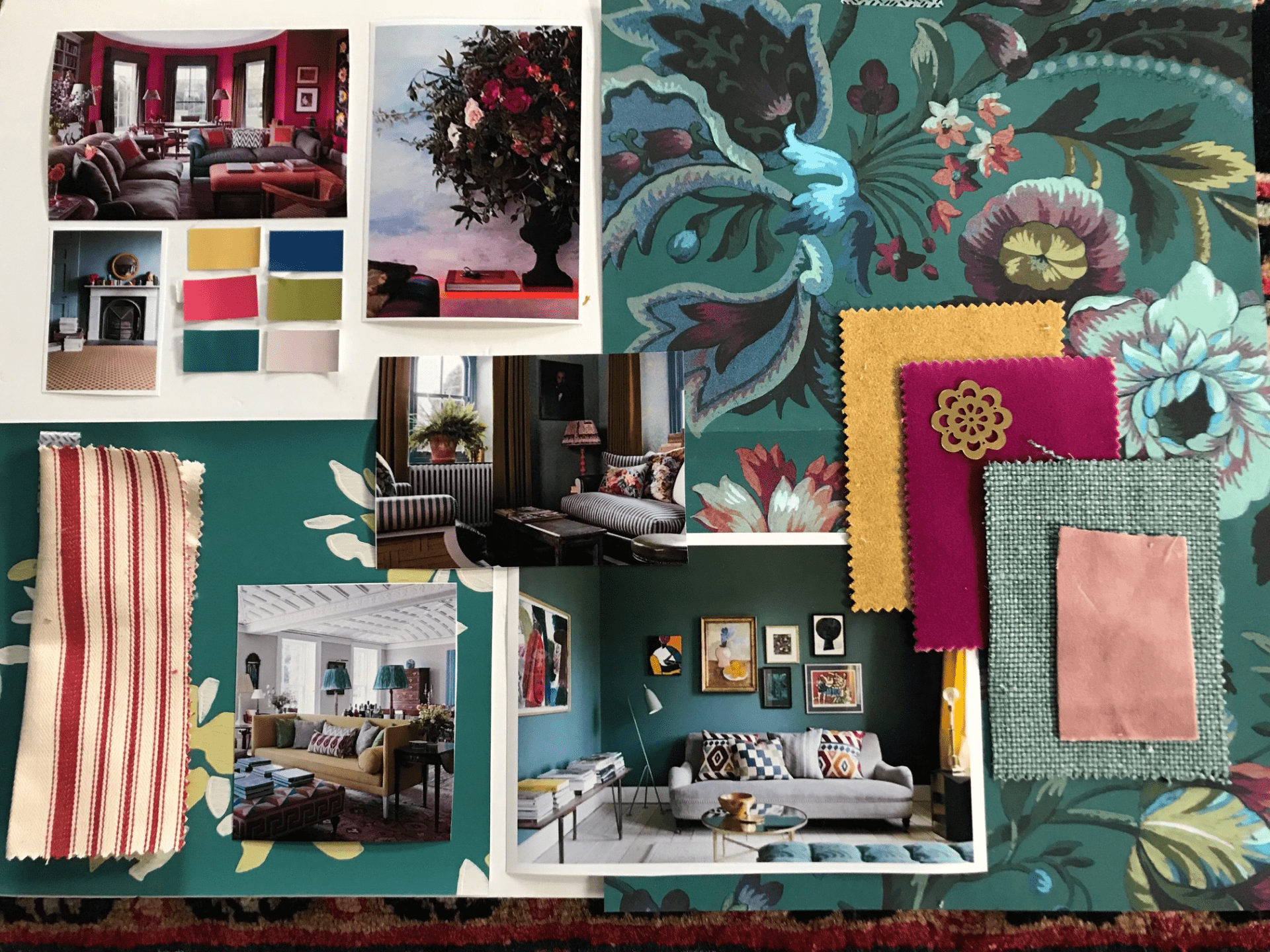
3. Setting the Theme and Vision
Establish a clear theme and design vision to create a moodboard for your desired interior aesthetic. Determine whether you prefer a contemporary, traditional, or transitional design style; and identify key elements such as color palettes, furniture styles, and decor preferences that align with your design goals. Setting a cohesive theme and vision serves as a foundational framework that guides your moodboard creation process, enabling you to curate visuals and materials that reflect your distinct design sensibilities and aspirations.
3.1 Defining Your Design Objectives
Defining your design objectives is a crucial step in setting the theme and vision for your moodboard. Identify the specific areas of your home that you intend to design; such as the living room, bedroom, kitchen, or bathroom, and outline your design preferences and functional requirements for each space. Consider factors such as spatial layout, lighting preferences, furniture arrangements, and color schemes; and articulate your design objectives in a concise and comprehensive manner to guide your moodboard creation process effectively.
4. Gathering Inspirations
Gathering design inspirations from various sources is an integral part of the moodboard creation process; as it enables you to explore diverse design styles, color palettes, and decor ideas that resonate with your personal taste and design preferences. Browse through interior design magazines, online platforms, social media channels, and design blogs; to collect a diverse range of visuals and aesthetics that inspire and captivate your imagination. By gathering a wide array of design inspirations; you can expand your creative horizons and discover unique design elements that reflect your individual style and personality.
4.1 Exploring Design Platforms and Resources
Exploring reputable design platforms and resources can provide you with valuable insights and inspiration for your moodboard creation process. Browse through interior design websites, virtual design communities, and social media platforms; to discover the latest design trends, color schemes, and decor ideas that align with your design objectives and personal preferences. Engage with design enthusiasts and professionals to gain valuable tips and recommendations, and leverage online resources and tools to streamline your moodboard creation process effectively.
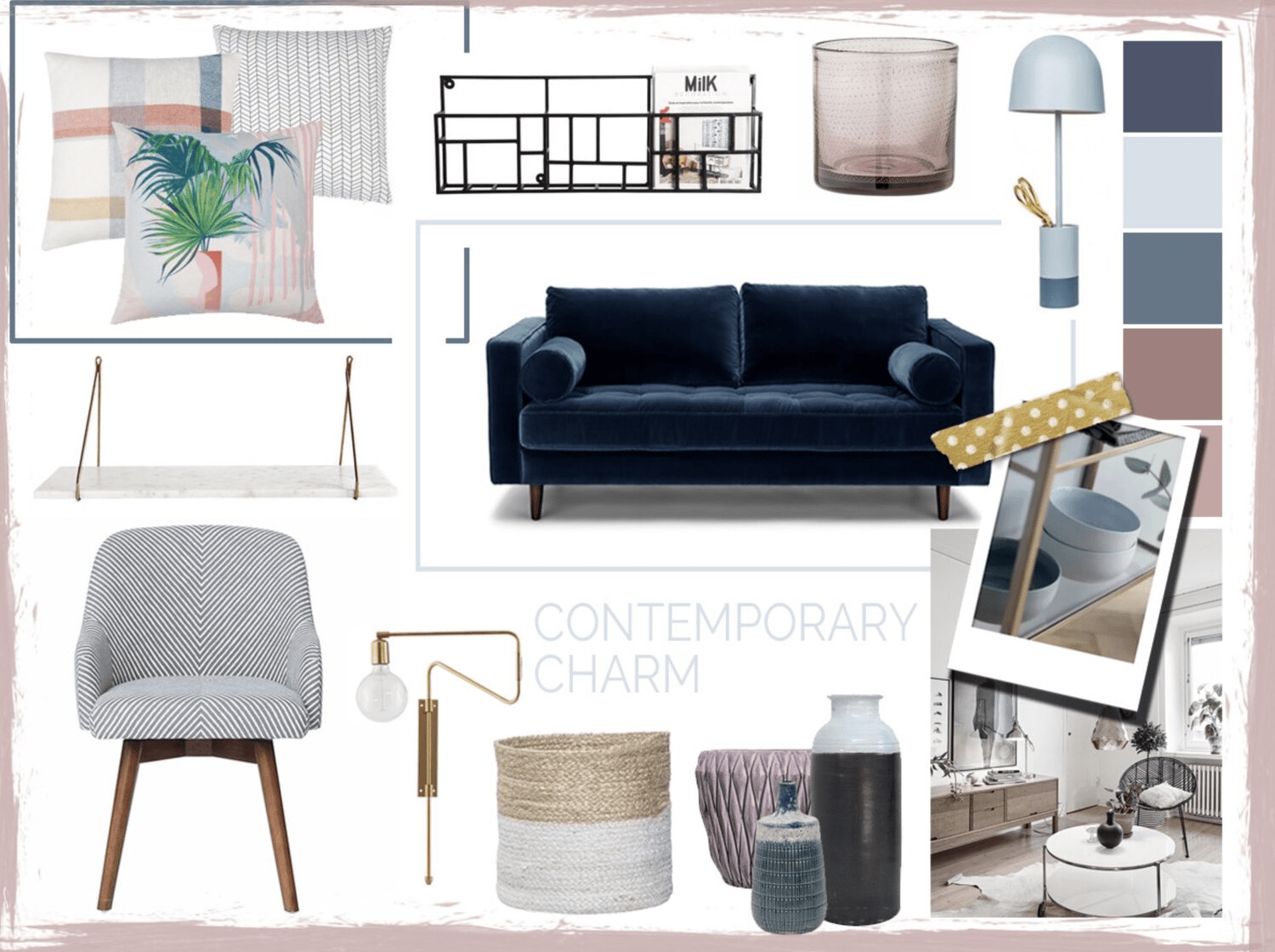
5. Choosing the Right Platform
Selecting the right platform for your moodboard creation; is essential for organizing and presenting your design inspirations in a cohesive and visually appealing manner. Choose a user-friendly and intuitive digital platform that offers a wide range of design tools and features; allowing you to compile and arrange your visuals and materials seamlessly. Opt for platforms that support high-resolution image uploads, customizable design layouts, and collaborative sharing options; enabling you to showcase your design vision with clarity and precision.
5.1 Exploring Digital Moodboard Creation Tools
Exploring digital moodboard creation tools can provide you with valuable insights into the various features and functionalities available for organizing and presenting your design inspirations. Evaluate different software applications, online platforms, and design tools; that offer customizable templates, drag-and-drop functionalities, and image editing capabilities; allowing you to curate a visually captivating and professional-looking moodboard that reflects your unique design aspirations and preferences.
6. Collecting Materials
Collecting materials for your moodboard involves gathering; a diverse range of images, textures, color swatches, and material samples that reflect your desired design aesthetic and theme. Compile high-quality images of furniture pieces, decor accessories, fabric swatches, and paint samples; that resonate with your design vision; and organize them into distinct categories based on their design style, color scheme, and visual appeal. Focus on selecting materials that evoke a sense of visual harmony and aesthetic balance; enabling you to curate a cohesive and visually captivating moodboard that embodies your unique design sensibilities and aspirations.
6.1 Curating a Diverse Material Collection
Curating a diverse material collection involves selecting a wide range of visuals and textures; that complement your design objectives and reflect your individual style and personality. Source materials from reputable design catalogs, online retailers, and local home decor stores; to explore a variety of design options and selections. Pay attention to details such as fabric textures, color tones, and material compositions; to ensure that your material collection accurately reflects your design preferences and aesthetic sensibilities; allowing you to create a comprehensive and visually stunning moodboard that encapsulates your dream interior design.
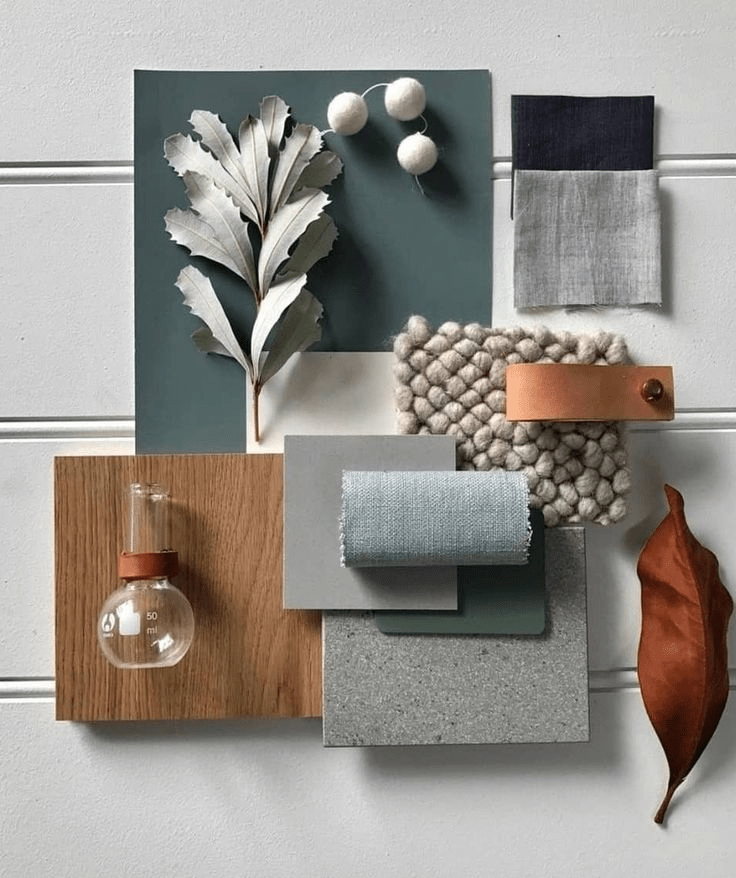
7. Organizing the Moodboard
Organizing your moodboard; requires careful consideration and thoughtful curation of visuals and materials to create a visually appealing and cohesive design composition. Arrange your materials based on their; design style, color palette, and thematic relevance, and establish a logical flow and visual hierarchy; that guides the viewer’s attention and focus. Experiment with different layout options and design configurations to determine; the most visually captivating and aesthetically pleasing arrangement for your moodboard; ensuring that each design element and material selection harmoniously complements the overall design narrative and theme.
7.1 Implementing Visual Storytelling Techniques
Implementing visual storytelling techniques can enhance the overall impact and effectiveness of your moodboard; enabling you to communicate your design vision and aspirations with clarity and precision. Use visual elements such as focal points contrasting colors, and thematic groupings; to create a compelling narrative that resonates with the viewer and evokes a strong emotional response. Incorporate design elements and materials that convey a sense of visual harmony and aesthetic balance; allowing you to curate a moodboard that effectively communicates your unique design story and captivates the imagination of your audience.
8. Playing with Colors and Textures
Experimenting with colors and textures; is a creative and engaging process that enables you to explore different design combinations and arrangements; fostering a deep understanding of how various visual elements interact and influence the overall design aesthetic. Play with complementary and contrasting color palettes, and integrate a diverse range of textures and materials; that add depth and dimension to your moodboard. Focus on creating a harmonious and visually captivating color scheme; that complements your design objectives and evokes a sense of aesthetic appeal and emotional resonance.
8.1 Understanding Color Psychology in Interior Design
Understanding color psychology in interior design is essential for creating a visually appealing and emotionally engaging design composition. Explore the psychological effects of different colors and tones, and identify color palettes; that align with your design objectives and personal preferences. Consider factors such as natural lighting, spatial dimensions, and room functionality; when selecting color schemes, and leverage color contrasts and accents to create a dynamic and visually stimulating interior aesthetic that reflects your unique style and personality.
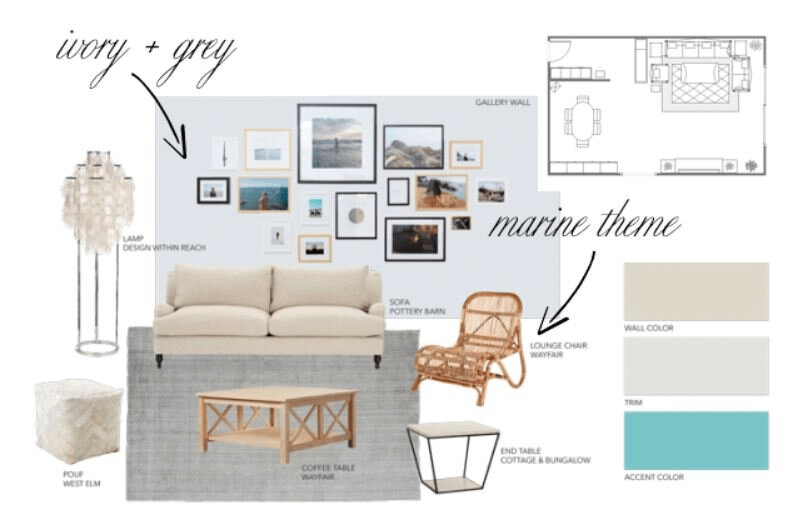
9. Incorporating Key Elements
Incorporating key elements into your moodboard involves integrating essential design components and materials; that contribute to the overall visual narrative and aesthetic appeal. Select furniture pieces, decor accessories, and lighting fixtures; that align with your design theme and color palette, and position them strategically within your moodboard; to create a well-balanced and visually engaging design composition. Pay attention to details such as scale, proportion, and spatial arrangement; to ensure that each design element and material selection contributes to the overall cohesiveness and visual impact of your moodboard.
9.1 Selecting Statement Pieces and Focal Points
Selecting statement pieces and focal points can serve as design anchors; that enhance the overall visual appeal and aesthetic significance of your moodboard. Choose furniture pieces, decor accessories, or artwork; that command attention and evoke a strong emotional response, and position them strategically within your moodboard; to create a sense of visual balance and design harmony. Consider incorporating focal points that reflect your design preferences and aspirations; allowing you to infuse your moodboard with a distinct and captivating design personality that resonates with your unique style and sensibilities.
10. Balancing Visual Hierarchy
Balancing visual hierarchy is essential for creating a cohesive and visually appealing moodboard that guides the viewer’s attention and focus. Establish a clear visual hierarchy that emphasizes key design elements and materials; and arrange them in a structured and organized layout that facilitates easy comprehension and interpretation. Use design principles such as scale, proportion, and spatial relationships to create a well-balanced and aesthetically pleasing design composition; allowing you to showcase your design vision and aspirations with clarity and precision.
10.1 Creating a Structured Design Layout
Creating a structured design layout involves arranging your design elements and materials in a logical and organized manner; that supports a clear visual hierarchy and design narrative. Experiment with different layout options and design configurations, and identify a layout style that complements your design objectives and aesthetic preferences. Consider factors such as symmetry, balance, and alignment when arranging your materials, and use grid structures or visual frameworks to create a structured and visually engaging moodboard that effectively communicates your design story and aspirations.
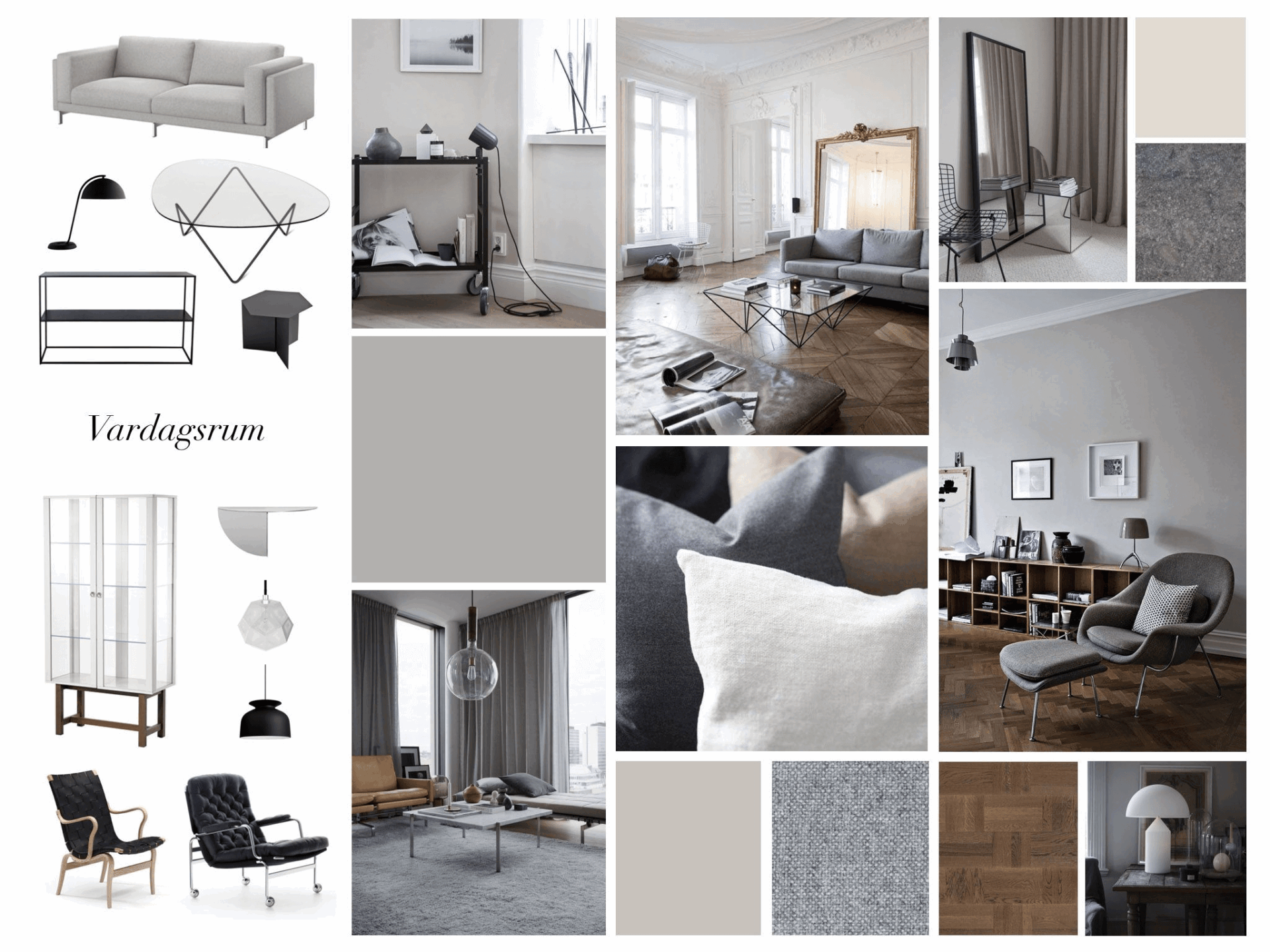
11. Adding Personal Touches
Adding personal touches to your moodboard; allows you to infuse your design narrative with a unique and distinctive design personality that reflects your individual style and sensibilities. Incorporate personal photographs, custom artwork, or sentimental objects that hold special meaning and significance; and integrate them into your moodboard to create a deeply personal and emotionally resonant design composition. Pay homage to your personal history, experiences, and aspirations; by infusing your moodboard with a sense of authenticity and individuality, enabling you to create a truly remarkable and heartfelt visual narrative that captures the essence of your dream interior design.
11.1 Infusing Emotional Significance into Design Elements
Infusing emotional significance into your design elements involves leveraging personal experiences and memories to create a design composition that evokes a strong emotional connection and resonance. Share personal stories, anecdotes, or inspirations that have influenced your design journey and aesthetic sensibilities; and integrate them into your moodboard to create a deeply personal and meaningful design narrative. Celebrate your design evolution and creative aspirations by infusing your moodboard with a sense of emotional depth and authenticity, allowing you to connect with your design audience on a profound and heartfelt level.
12. Reviewing and Refining
Reviewing and refining your moodboard is a crucial step in the creative process that allows you to assess the overall design composition and make necessary adjustments and enhancements to improve its visual impact and effectiveness. Step back and evaluate your moodboard from a holistic perspective, and identify areas that require refinement or fine-tuning to create a visually captivating and aesthetically pleasing design composition. Solicit feedback from design professionals, peers, or mentors to gain valuable insights and recommendations, and use constructive criticism to refine your moodboard and elevate its overall visual appeal and aesthetic significance.
12.1 Seeking Constructive Feedback and Suggestions
Seeking constructive feedback and suggestions can provide you with valuable insights and recommendations for improving the overall quality and impact of your moodboard. Share your design composition with trusted individuals, design enthusiasts, or industry experts, and encourage them to provide honest and constructive feedback that highlights the strengths and weaknesses of your design narrative. Embrace feedback as an opportunity for growth and self-improvement, and use it as a guiding light to refine and enhance your moodboard, enabling you to create a visually compelling and emotionally resonant design composition that captivates the imagination and inspires creativity.
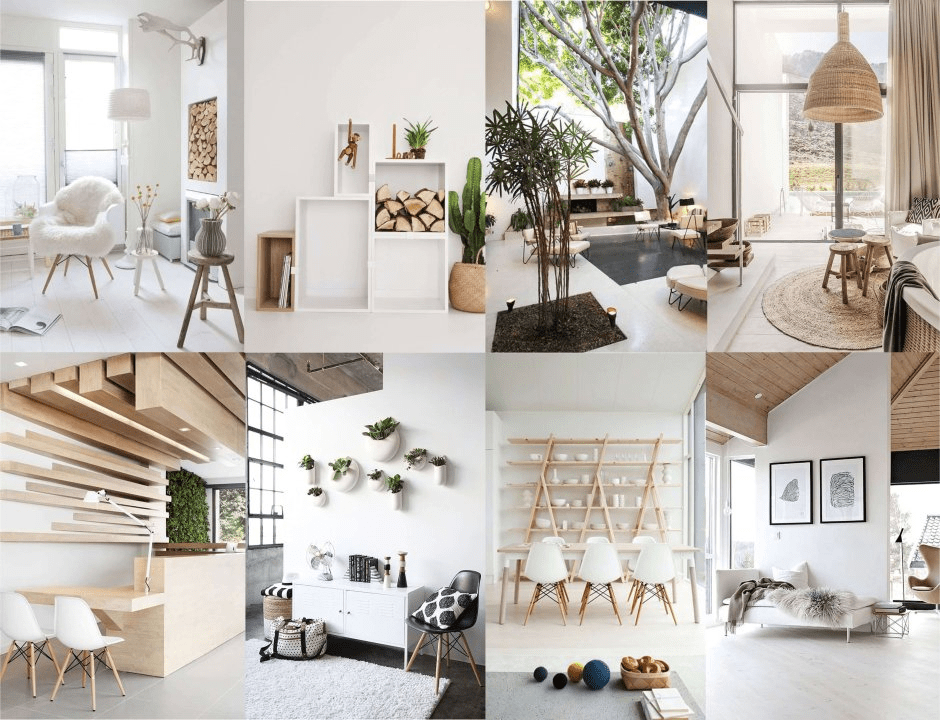
13. Showcasing Your Vision
Showcasing your vision involves presenting your moodboard with confidence and enthusiasm, allowing others to experience the beauty and creativity of your design narrative. Share your moodboard with friends, family, or design enthusiasts to generate excitement and engagement, and use it as a platform for communicating your design aspirations and creative vision. Express your design philosophy and aesthetic sensibilities with passion and conviction, and highlight the unique elements and design choices that contribute to the overall visual appeal and aesthetic significance of your moodboard. Celebrate your creative journey and design accomplishments by showcasing your vision with pride and enthusiasm, inspiring others to embark on their own design exploration and creative expression.
13.1 Communicating Your Design Narrative Effectively
Communicate design vision and aspirations clearly and passionately. Use engaging storytelling and expressive language to convey the essence and significance of your design. Highlight unique design elements and materials that create a cohesive and visually impactful composition. Share personal anecdotes, design inspirations, and creative insights to connect with your audience on a profound level. Celebrate the beauty and creativity of your design by confidently and enthusiastically sharing it, inspiring others to embrace their own unique style and express their creative aspirations authentically and passionately.
14. Sharing and Collaborating
Sharing and collaborating with others can foster a sense of community and creativity, enabling you to connect with like-minded individuals and design enthusiasts who share your passion and enthusiasm for interior design. Collaborate with peers, mentors, or industry experts to exchange design ideas and insights, and leverage their expertise and experience to refine and enhance your moodboard.
Participate in design workshops, online forums, and community events to share your design journey and creative process, and engage with a diverse network of design professionals and enthusiasts who can provide you with valuable guidance and support. Embrace the power of collaboration and community to expand your creative horizons and elevate your design narrative, allowing you to create a truly remarkable and inspiring moodboard that captivates the imagination and fosters a deep appreciation for interior design and creative expression.
14.1 Building a Creative Network and Community
Building a creative network and community involves fostering meaningful connections and relationships with individuals who share your passion and enthusiasm for interior design. Engage with design professionals, peers, and mentors to exchange ideas, insights, and recommendations that support your design journey and creative aspirations. Join online design communities, social media groups, and professional networks to connect with like-minded individuals and industry experts, and participate in collaborative projects and design initiatives that promote creative expression and artistic exploration. Embrace the power of community and collaboration to build a strong and supportive network that encourages creativity, innovation, and personal growth, allowing you to develop your design skills and aesthetic sensibilities within a nurturing and inspiring environment.
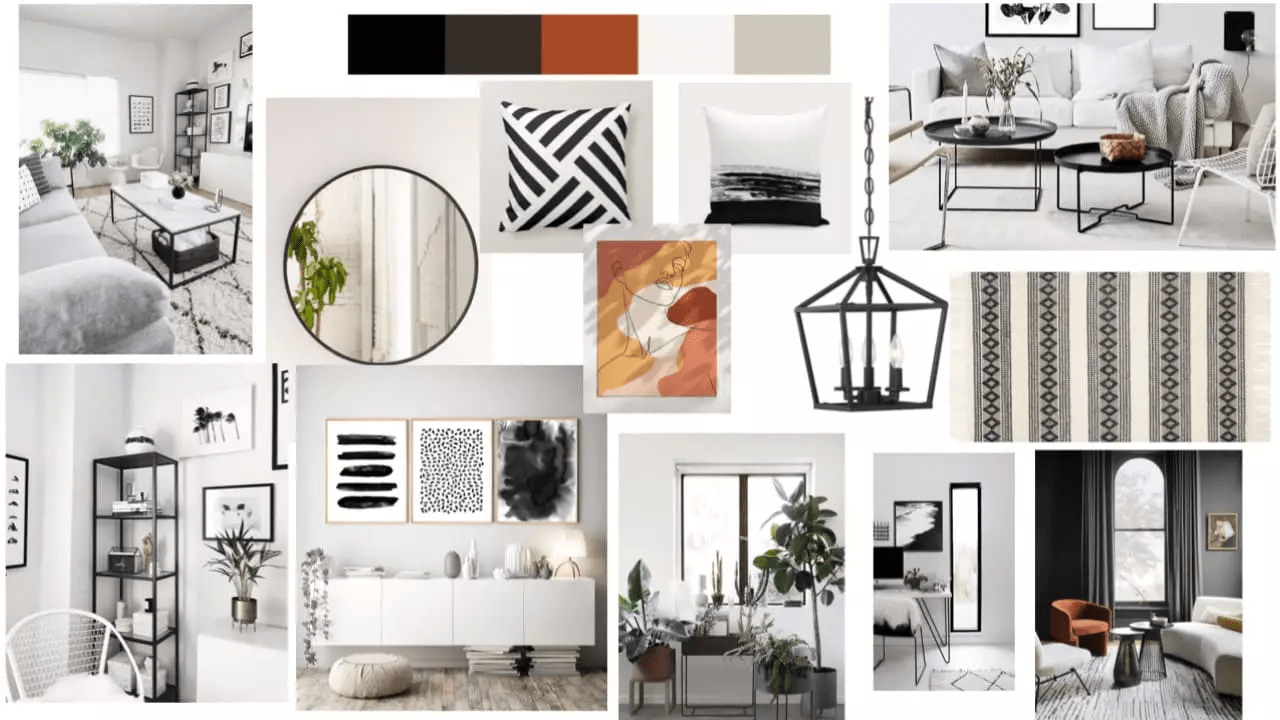
15. Finale Tips
Creating a captivating moodboard for your dream interior is a fulfilling and inspiring process that enables you to explore your creativity and express your unique design style and sensibilities. By incorporating diverse design elements, materials, and textures, you can craft a visually stunning and emotionally resonant design composition that reflects your design vision and aesthetic aspirations. Embrace the beauty and creativity of your design journey, and celebrate the power of visual storytelling and creative expression that enables you to transform your dream interior into a captivating and inspiring reality.

FAQs
What is the significance of a moodboard in interior design?
A moodboard is a visual tool that helps people imagine their design ideas and preferences for a space. It brings together different design elements and materials on one platform, allowing exploration of various combinations and arrangements. This way, it helps understand how different design elements work together within a specific interior setting.
How can I create a visually appealing moodboard for my dream interior?
To create a visually appealing moodboard, focus on selecting high-quality images, textures, color palettes, and material samples that reflect your design objectives and aesthetic preferences. Pay attention to details such as visual hierarchy, spatial arrangement, and thematic relevance to ensure that each design element and material selection contributes to the overall cohesiveness and aesthetic appeal of your moodboard
How can I infuse my personal style into my moodboard?
Infuse your personal style into your moodboard by incorporating personal photographs, custom artwork, or sentimental objects that hold special meaning and significance. Share personal stories, anecdotes, or inspirations that have influenced your design journey and aesthetic sensibilities, and use them as a creative springboard for infusing your moodboard with a sense of authenticity and individuality.
What are some effective tips for creating a well-balanced moodboard?
To create a well-balanced moodboard, consider factors such as color psychology, spatial layout, and visual storytelling techniques that enhance the overall visual impact and emotional resonance of your design composition. Experiment with different design arrangements and configurations, and use constructive feedback and suggestions to refine and enhance your moodboard, allowing you to create a visually captivating and emotionally engaging design narrative.
How can I effectively communicate my design narrative through my moodboard?
To effectively communicate your design story through your moodboard, use engaging storytelling and expressive language that connects with your audience and deepens their appreciation for your design vision. Share personal stories, design inspirations, and creative insights that have influenced your design journey. Connect with your audience on an emotional level, inspiring them to embrace their unique design style and express their creative aspirations with confidence and passion.
How do you make a good mood board for interior design?
To create a good mood board for interior design, collect visual inspirations, such as images, colors, textures, and patterns that resonate with the intended design concept, and organize them cohesively on a physical or digital platform to convey the desired aesthetic and ambiance.
What is an interior mood board?
An interior mood board is a visual compilation of design elements, including images, color palettes, material samples, and textures, serving as a creative tool to conceptualize and communicate the overall style and theme of an interior design project effectively.
How do I make a mood board for interior design for free?
You can create a mood board for interior design for free by utilizing various online platforms and applications that offer customizable templates and a wide range of images, colors, and textures, allowing you to curate and visualize design ideas effortlessly.
How do you make an aesthetic moodboard?
To create an aesthetic mood board, gather a diverse collection of visually appealing images, colors, textures, and typography that reflect a specific theme or mood, and arrange them in a visually engaging and cohesive layout to evoke the desired emotional response and aesthetic sensibility.
